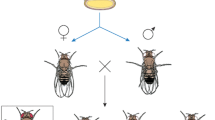Abstract.
Sphingolipids are important structural components of membranes that delimit the boundaries of cellular compartments, cells and organisms. They play an equally important role as second messengers, and transduce signals across or within the compartments they define to initiate physiological changes during development, differentiation and a host of other cellular events. For well over a century Drosophila melanogaster has served as a useful model organism to understand some of the fundamental tenets of development, differentiation and signaling in eukaryotic organisms. Directed approaches to study sphingolipid biology in Drosophila have been initiated only recently. Nevertheless, earlier phenotypic studies conducted on genes of unknown biochemical function have recently been recognized as mutants of enzymes of sphingolipid metabolism. Genome sequencing and annotation have aided the identification of homologs of recently discovered genes. Here we present an overview of studies on enzymes of the de novo sphingolipid biosynthetic pathway, known mutants and their phenotypic characterization in Drosophila.
Similar content being viewed by others
Author information
Authors and Affiliations
Corresponding author
Additional information
Received 14 June 2004; received after revision 15 August 2004; accepted 21 August 2004
Rights and permissions
About this article
Cite this article
Acharya, U., Acharya, J.K. Enzymes of Sphingolipid metabolism in Drosophila melanogaster. CMLS, Cell. Mol. Life Sci. 62, 128–142 (2005). https://doi.org/10.1007/s00018-004-4254-1
Issue Date:
DOI: https://doi.org/10.1007/s00018-004-4254-1




